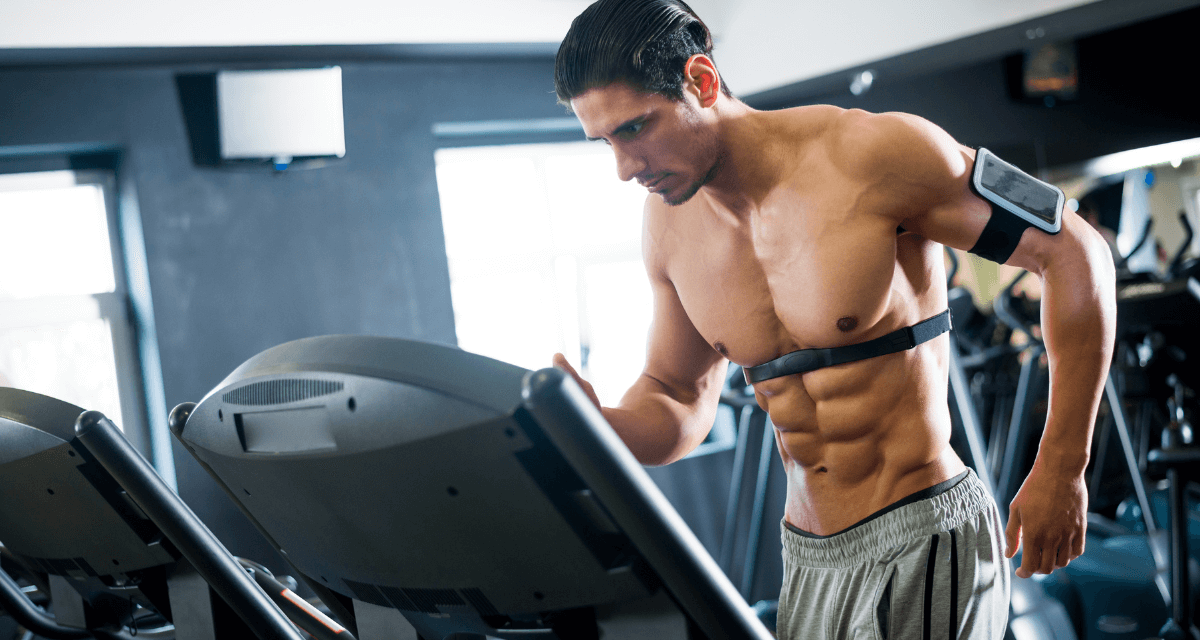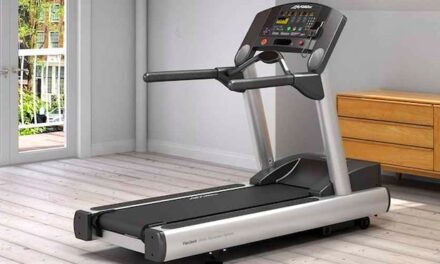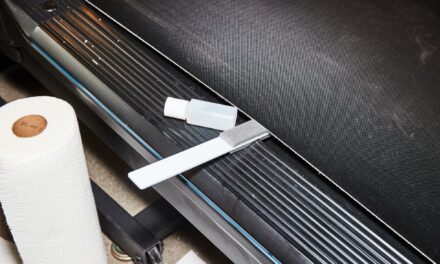Curious about what a treadmill can do for you? Look no further! In this article, we will explore the many benefits and functions of this popular fitness equipment. Whether you’re looking to lose weight, improve cardiovascular health, or simply stay active, a treadmill might just be the perfect addition to your exercise routine. From providing a convenient indoor running option to offering customizable workouts, this versatile machine has something to offer everyone. So lace up your sneakers and get ready to discover all the amazing things a treadmill can do for your fitness journey!
What is a Treadmill?
A treadmill is a fitness equipment that allows you to walk, jog, or run in place, simulating the experience of outdoor running or walking. It consists of a moving conveyor belt, powered either by a motor or by the user’s own movement, that allows you to exercise at your own pace and in the comfort of your own home or gym.
Definition of a Treadmill
A treadmill is a stationary exercise machine that enables you to engage in cardiovascular activities by walking, jogging, or running in place. It provides a convenient and controlled environment for users to enhance their fitness levels and achieve various health benefits.
History of Treadmills
Treadmills have a long history dating back to ancient times. Initially used as a form of punishment or for various labor tasks, such as grinding grain and pumping water, treadmills have evolved over the centuries to become an essential fitness tool. Today’s modern treadmill designs incorporate advanced technology and ergonomic features to enhance the user’s exercise experience.
Benefits of Using a Treadmill
Using a treadmill offers numerous benefits for your overall health and well-being. Whether you are looking to improve cardiovascular health, lose weight, or enhance your mental well-being, a treadmill can be a valuable addition to your fitness routine.
Cardiovascular Health
Regular treadmill workouts can significantly improve your cardiovascular health. Engaging in aerobic exercise on a treadmill increases your heart rate and enhances blood circulation throughout your body. This, in turn, strengthens your heart, improves lung function, and lowers the risk of heart disease, stroke, and other cardiovascular conditions.
Weight Loss and Fitness
If you are aiming to lose weight or maintain a healthy weight, a treadmill can be an effective tool. By engaging in regular treadmill workouts, you can burn calories, speed up your metabolism, and achieve weight loss goals. Treadmill exercises also contribute to building lean muscle mass, toning your body, and improving overall fitness levels.
Convenience and Accessibility
One of the major advantages of using a treadmill is its convenience and accessibility. With a treadmill at home or in a gym, you can exercise at any time, regardless of weather conditions or time constraints. This makes it easy to incorporate workouts into your daily routine, ensuring regular physical activity for enhanced health.
Joint and Muscle Health
Compared to outdoor running, using a treadmill can be gentler on your joints. The cushioned running surface of a treadmill helps to absorb impact and reduce stress on your joints, minimizing the risk of injuries. Additionally, by adjusting the incline and speed settings on a treadmill, you can target different muscle groups and improve strength and endurance.
Mental Health
Regular exercise on a treadmill has positive effects on your mental health. Running or walking on a treadmill releases endorphins, which are natural mood boosters, promoting feelings of happiness and reducing stress levels. Treadmill workouts can also provide a sense of accomplishment, improve self-esteem, and alleviate symptoms of anxiety and depression.
Versatility of Workouts
Treadmills offer a wide range of workout options to suit your fitness goals and preferences. From steady-state jogging or walking to high-intensity interval training (HIIT), treadmills allow you to customize your workouts by adjusting speed, incline, and duration. This versatility enables you to continuously challenge yourself and prevent workout plateaus.
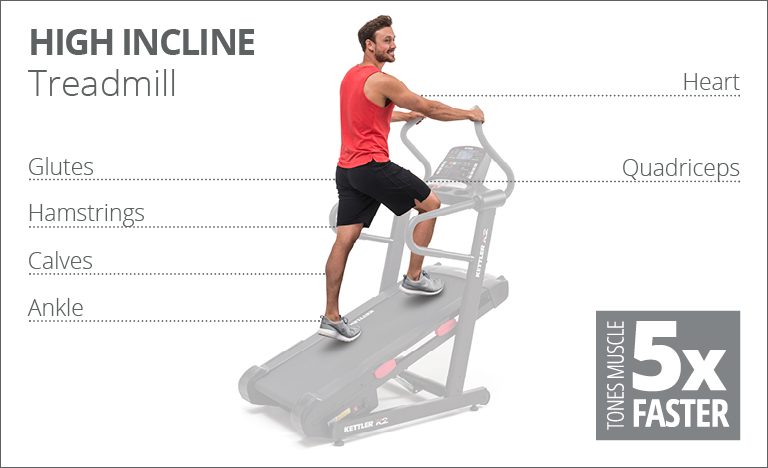
This image is property of www.kettler.co.uk.
Types of Treadmills
There are different types of treadmills available in the market, each designed to cater to specific needs and preferences.
Manual Treadmills
Manual treadmills are non-motorized and rely on the user’s own movement to operate. The belt moves as you walk or run, providing a low-impact workout. Manual treadmills are generally more affordable and take up less space, making them suitable for small home gyms or budget-conscious individuals.
Motorized Treadmills
Motorized treadmills are powered by a motor, allowing for a continuous and controlled pace. They offer a wide range of preset workout programs and adjustable speed and incline settings, providing more versatility and options for challenging workouts. Motorized treadmills are ideal for individuals looking for a more advanced and customizable exercise experience.
Folding Treadmills
Folding treadmills are designed with space-saving features, allowing you to fold and store the equipment when not in use. This makes them ideal for individuals with limited floor space or those who prefer a portable option. Folding treadmills offer similar functionalities to non-folding ones, providing convenience without compromising on performance.
Commercial Treadmills
Commercial treadmills are heavy-duty machines designed for use in gyms, fitness centers, and other commercial settings. They are built to withstand heavy usage and are equipped with powerful motors, larger running surfaces, and advanced features. Commercial treadmills offer enhanced durability and performance, making them suitable for high-intensity and continuous workouts.
Home Treadmills
Home treadmills are designed for personal use in residential settings. They are typically more compact, lightweight, and user-friendly compared to commercial treadmills. Home treadmills provide the convenience of exercising at home and offer a balance between performance, space-saving features, and affordability.
Features and Functions of Treadmills
Treadmills come with various features and functions that enhance your workout experience and allow for customization.
Speed and Incline Control
Most treadmills offer adjustable speed and incline settings, allowing you to simulate different terrains and intensify your workouts. You can increase or decrease the speed to match your desired pace and fitness level. Adjusting the incline replicates the challenges of uphill and downhill running, targeting different muscle groups and adding variety to your workouts.
Programmable Workouts
Many treadmills come with pre-programmed workout options, offering a variety of exercise routines and challenges. These programs can vary in intensity, duration, and workout goals, providing guidance and motivation for your fitness journey. Some treadmills also allow you to create and save custom workouts based on your specific preferences and goals.
Heart Rate Monitoring
Heart rate monitoring is a popular feature in modern treadmills. Integrated sensors or wireless chest straps measure your heart rate during workouts, giving you real-time feedback on your cardiovascular performance. This information helps you stay within your target heart rate zone for optimal calorie burn, endurance training, or fat loss.
Safety Features
Treadmills often come with built-in safety features to protect the user. These can include emergency stop buttons, safety clips, and pause buttons, allowing you to quickly halt the belt in case of emergencies or accidents. Safety features are essential for preventing injuries and ensuring a safe workout environment.
Entertainment Options
Many treadmills now offer entertainment options to make your workouts more enjoyable. Built-in LCD screens, tablet holders, and media ports allow you to watch TV shows, movies, or listen to music while exercising. Some treadmills even offer compatibility with fitness apps, virtual runs, and interactive training programs for a more interactive and engaging workout experience.
Foldability and Portability
Foldable treadmills are designed to save space and provide easy storage options. These treadmills often have a folding mechanism that allows you to fold the running deck vertically, reducing the overall footprint of the equipment. Portability features such as transport wheels make it easier to move the treadmill around your home or gym if needed.
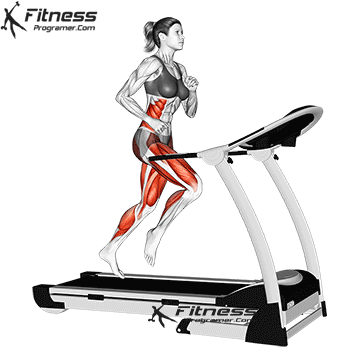
This image is property of fitnessprogramer.com.
How Treadmills Work
Understanding how treadmills work can give you a better grasp of their mechanics and operation.
Motor and Belt System
Motorized treadmills are powered by an electric motor that drives the movement of the conveyor belt. The motor provides the necessary power to move the belt smoothly and allows for adjustable speed and incline settings. The belt, made of durable materials, provides a comfortable and non-slip surface for walking, jogging, or running.
Control Panels
Treadmills are equipped with control panels that allow you to adjust various settings and modes. These panels typically feature buttons, knobs, or touchscreens, enabling you to control speed, incline, program selection, and other features. Control panels also display important workout metrics, such as time, distance, calories burned, and heart rate.
Safety Precautions
Treadmills incorporate several safety measures to minimize the risk of accidents and injuries. Emergency stop buttons or safety clips are positioned within reach, allowing you to immediately stop the belt if needed. Some treadmills also feature a gradual start option, slow acceleration, and handrails for added stability and support.
Maintenance and Care
To ensure the longevity of your treadmill and optimize its performance, regular maintenance and care are essential. This includes cleaning the belt and deck, lubricating the belt as recommended by the manufacturer, checking and tightening bolts and screws, and inspecting the motor and electronic components. Proper maintenance helps prevent wear and tear, prolonging the life of your treadmill.
Treadmill vs Outdoor Running
While both treadmill running and outdoor running offer health benefits, there are a few key differences to consider.
Impact on Joints
Running on a treadmill generally offers a lower impact on your joints compared to outdoor running. Treadmills are equipped with cushioned surfaces that absorb shock and reduce stress on your joints, making them ideal for individuals with joint issues or those who seek a lower-impact workout. Outdoor running, on the other hand, can expose your joints to uneven surfaces and harder impacts, potentially increasing the risk of injuries.
Controlled Environment
Using a treadmill provides a controlled exercise environment. You can adjust the speed and incline settings, avoid obstacles and environmental hazards, and exercise in any weather conditions. This control is especially beneficial for individuals who prefer consistency, precise training, or need to avoid specific outdoor conditions such as extreme temperatures or air pollution.
Safety Considerations
Running outdoors carries certain safety considerations, such as traffic, rough terrain, or encounters with stray animals. Treadmills eliminate many of these safety concerns by providing a secure and enclosed exercise space. This can offer peace of mind, particularly for those exercising alone or in unfamiliar areas.
Variety of Terrain
Outdoor running allows for a greater variety of terrains, including hills, trails, and tracks, compared to treadmill running. Different terrains offer varying levels of difficulty and engage different muscle groups. However, treadmills with incline settings can simulate uphill or downhill terrains, providing a similar challenge to outdoor running.
Motivation and Focus
Individual preferences can influence motivation and focus during workouts. Some individuals find the variety of outdoor scenery and the exploration of new routes to be more engaging and motivating. On the other hand, treadmills can provide a distraction-free environment, allowing for increased focus on form, pace, and specific training goals.
Despite these differences, both treadmill running and outdoor running can be effective forms of exercise. The choice between the two ultimately depends on personal preference, goals, and specific circumstances.
Choosing the Right Treadmill
When selecting a treadmill, consider several factors that align with your needs, space, and budget.
Budget Considerations
First and foremost, determine your budget for purchasing a treadmill. Treadmill prices can vary significantly, depending on the features, brand, and quality. Consider the long-term investment value of the treadmill and choose one that offers the best balance of affordability and performance within your budget.
Space and Storage
Assess the available space in your home or gym to determine the appropriate size and type of treadmill. Measure the designated area, considering both the floor space and vertical clearance required for the treadmill. If space is a constraint, folding treadmills are an excellent option as they can be easily stored when not in use.
Weight Capacity
Check the weight capacity of the treadmill to ensure it can support your body weight. Treadmill weight capacities vary, and it is crucial to select one that can accommodate your weight without compromising safety or performance. Overshooting the weight limit can lead to premature wear and tear of the treadmill’s components.
Motor Power
Consider the motor power of the treadmill, as it determines the smoothness and durability of the machine. Higher horsepower motors deliver better performance and accommodate heavier users or intense workouts. Look for a treadmill with a motor power suitable for your fitness goals and intended usage.
Deck Size and Cushioning
The deck size and cushioning of a treadmill can impact comfort and safety during workouts. A larger deck provides more space for natural strides and running with a wider stance. Cushioned surfaces help reduce impact on joints and minimize discomfort. Consider the deck size and cushioning technology that aligns with your body size and workout preferences.
Additional Features
Take into account any additional features that would enhance your workout experience. This can include entertainment options, connectivity with fitness apps, compatibility with heart rate monitors, and customizable workout programs. Determine which features are essential to you and ensure the treadmill you choose meets your desired criteria.
Using a Treadmill Safely
To ensure a safe and injury-free workout, follow these guidelines when using a treadmill.
Proper Warm-up and Cool-down
Before starting your treadmill workout, begin with a warm-up session to prepare your muscles and cardiovascular system. Engage in light exercises such as dynamic stretches or brisk walking for 5-10 minutes. Similarly, conclude your workout with a cool-down period, gradually decreasing the intensity to allow your heart rate and breathing to return to normal.
Correct Form and Posture
Maintaining proper form and posture is crucial to prevent injuries and optimize your treadmill workout. Stand upright with a relaxed upper body and engage your core muscles. Avoid slouching or leaning on the handrails, as this can disrupt proper running mechanics. Look straight ahead and land softly on your midfoot, allowing your heels to lightly touch the belt with each stride.
Gradual Increase in Intensity
When using a treadmill, it is important to gradually increase the intensity of your workouts. Whether it is speed, incline, or duration, avoid sudden and drastic changes that can overload your muscles and cardiovascular system. Gradually increase your workout parameters over time, allowing your body to adapt and safely progress.
Monitoring Heart Rate
Monitoring your heart rate during treadmill workouts can help you stay within an appropriate intensity range. Whether through built-in sensors or wearable heart rate monitors, aim to maintain a heart rate that aligns with your fitness goals. This allows you to optimize calorie burn, endurance training, or fat loss, while ensuring you do not overexert yourself.
Using Safety Features
Familiarize yourself with the safety features of your treadmill and utilize them appropriately. Make sure you know the location of the emergency stop button or safety clip and practice stopping the belt in case of emergencies. If your treadmill has handrails, use them for stability and additional safety only when necessary, rather than relying on them for support throughout the entire workout.
Avoiding Distractions
While some treadmills offer entertainment options, it is important to avoid distractions that can compromise your safety and focus during workouts. Minimize the use of electronic devices, such as smartphones or tablets, as they can divert your attention and disrupt your form. Stay present and focused on your movements to maximize the benefits of your treadmill workout.

This image is property of fitnessprogramer.com.
Tips for Effective Treadmill Workouts
To make the most out of your treadmill workouts and maintain motivation, consider these tips:
Setting Realistic Goals
Set realistic and achievable goals for your treadmill workouts. Whether it is reaching a certain distance, duration, or calorie burn, start with manageable targets and gradually increase them as you progress. Celebrate milestones along the way to stay motivated and encouraged.
Varying Speed and Incline
Utilize the adjustable speed and incline settings on your treadmill to vary the intensity of your workouts. Incorporate intervals of high intensity and lower intensity to challenge your cardiovascular system, increase calorie burn, and improve overall fitness. Experiment with different combinations to keep your workouts engaging and effective.
Incorporating Interval Training
Interval training is an efficient and effective way to maximize the benefits of your treadmill workouts. Alternate between periods of high-intensity exertion and active recovery at a lower intensity. This method improves cardiovascular fitness, increases calorie burn, and enhances endurance.
Mixing Cardio and Strength Exercises
Combine cardiovascular exercises with strength training exercises for a comprehensive workout. Incorporate intervals of running or brisk walking with bodyweight exercises or dumbbell exercises. This combination not only burns calories but also strengthens your muscles and builds overall fitness.
Tracking Progress
Monitor your progress by keeping a record of your workouts. Note down details such as distance covered, time spent, and calories burned. Regularly review your progress to stay motivated and track improvements in your overall fitness and performance.
Staying Motivated
Keep your treadmill workouts enjoyable and motivating by incorporating various strategies. Listen to energizing music, audiobooks, or podcasts that keep you engaged and entertained. Set workout challenges or participate in virtual races to push yourself further. Consider varying your workout routine by using different treadmill programs or exploring virtual running videos for a change of scenery.
Conclusion
Treadmills offer a convenient and effective way to improve cardiovascular health, enhance fitness levels, and achieve various health benefits. By providing a controlled and accessible exercise environment, treadmills cater to a wide range of individuals with different fitness goals and preferences. Understanding the types, features, and functions of treadmills allows you to make an informed decision when selecting and using this versatile fitness equipment. Remember to prioritize safety, choose a treadmill that aligns with your budget and requirements, and incorporate effective workout strategies to maximize your treadmill workouts and stay motivated on your fitness journey.

